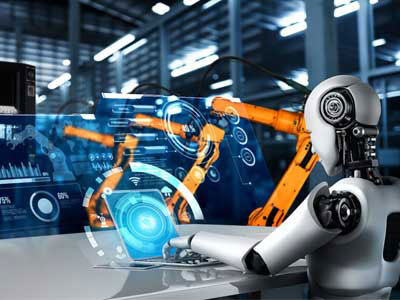Key Takeaway
The three main challenges in robotics are high costs, flexibility issues, and safety concerns.
High Costs: Developing and implementing robots can be very expensive. This includes the cost of hardware, software, and maintenance.
Flexibility Issues: Robots often lack the flexibility to adapt to new tasks or environments without significant reprogramming or reconfiguration.
Safety Concerns: Ensuring robots operate safely around humans is critical. This requires advanced sensors and programming to prevent accidents.
Technical and Engineering Challenges
Facing various technical and engineering challenges is a hallmark of our work at IndMALL. From intricate automation solutions to precision-driven safety measures, we tackle complexities head-on. Our expertise spans troubleshooting VFDs, optimizing relay performance, and ensuring seamless integration of industrial automation systems. At IndMALL, we thrive on overcoming obstacles, providing robust solutions that meet the demands of modern industrial applications. Join us in navigating the forefront of technological innovation and engineering excellence.

Regulatory and Compliance Issues
Navigating the regulatory and compliance landscape is a formidable challenge in the field of robotics. Ensuring that robots operate safely and ethically across diverse environments requires adherence to international standards and local regulations, which can significantly differ from region to region. For instance, the deployment of robots in healthcare settings demands strict compliance with safety standards to prevent accidents and protect human well-being. Similarly, manufacturing robots must meet rigorous safety guidelines to ensure smooth and hazard-free operations. These regulations are essential for preventing mishaps and ensuring that robotic systems are reliable and trustworthy.
Moreover, data privacy concerns add another layer of complexity. Robots, especially those integrated with AI, often collect and process sensitive information. Ensuring that this data is handled in compliance with privacy laws is critical. Engineers and companies must be vigilant and proactive in navigating these regulations to build trust with users and stakeholders. This involves not only legal compliance but also gaining public trust in robotic technologies. Clear communication, robust safety measures, and ethical considerations are paramount in establishing confidence in the capabilities and safety of robotic systems.
You May Like to Read
Social and Ethical Concerns
The integration of robotics into the workplace and daily life raises significant social and ethical concerns. One of the most prominent issues is the potential for job displacement. As robots enhance efficiency and productivity, there is a valid concern that they may replace human jobs, especially in sectors that rely heavily on manual labor. This can lead to economic and social challenges, making it imperative for industries to find a balance that allows robots and humans to coexist and complement each other in the workforce.
Ethical dilemmas also arise with the decision-making processes of autonomous robots. Questions about accountability and the ethical behavior of robots in complex situations need careful consideration. For example, how should a robot respond in a life-and-death scenario? Ensuring that robots act in ways that align with societal values and ethical standards is crucial. Addressing these concerns requires a balanced approach that considers the benefits of robotics while mitigating their potential adverse effects on society. Transparency in how robots make decisions and interact with humans is essential for building trust and acceptance.
Industry-Specific Challenges
Each industry presents unique challenges for the integration of robotics. In manufacturing, robots are required to handle tasks with extreme precision and speed to meet production demands. This necessitates robust, reliable systems capable of continuous operation without downtime. The challenge is to design and deploy robots that can maintain high performance levels in demanding industrial environments, ensuring they contribute positively to productivity and efficiency.
In the healthcare sector, robots face a different set of challenges. They must navigate complex and often unpredictable environments, working alongside humans in critical situations. Ensuring the safety and effectiveness of healthcare robots is paramount, as they directly impact patient care and outcomes. Similarly, in the logistics industry, robots must efficiently manage and transport goods, requiring advanced navigation and coordination capabilities. Each sector demands tailored robotic solutions that address specific needs and challenges, ensuring that robots enhance operations without compromising safety or reliability.
Future Challenges and Solutions
The future of robotics is filled with both challenges and exciting opportunities. As robots become more integrated into various industries and daily life, the need for advanced AI and machine learning capabilities will grow. Robots will need to adapt autonomously to new environments and tasks, requiring continuous learning and improvement. This calls for interdisciplinary research and collaboration, leveraging advancements in AI, material science, and human-robot interaction.
Developing robots that can seamlessly collaborate with humans, understanding and responding to human emotions and intentions, is another crucial challenge. Such advancements will make robots more intuitive and useful in a wider range of applications. Additionally, addressing energy efficiency and sustainability in robotics is vital. Solutions will involve creating energy-efficient systems and utilizing sustainable materials, ensuring that the expansion of robotics does not come at the cost of environmental degradation. The future of robotics lies in innovative solutions that combine technological advancements with ethical considerations and sustainability.
Conclusion
In conclusion, robotics faces several challenges today. These include issues with AI integration for complex decision-making, safety concerns in collaborative settings, and the need for better adaptability in rapidly changing environments. Moreover, the high cost of development and maintenance remains a significant barrier. Addressing these challenges requires ongoing innovation, improved regulatory frameworks, and interdisciplinary collaboration to ensure robotics can fulfill its potential across various industries.
